Significant Advances in AISA’s Struggle for Ensuring Social Justice in JNU !
JNU ADMINISTRATION FORCED TO RETRACT ITS ILLEGAL ADMISSION NORMS FOR OBC STUDENTS!
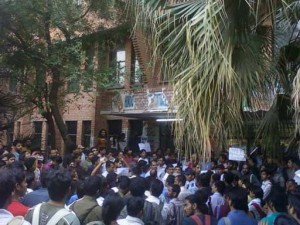 In 1992, the Supreme Court of India delivered a landmark judgment in the case of Indira Sawhney vs. the Union of India. We know this as the matter of the Mandal Recommendations. In its judgement, the apex court emphasized the role of caste as an institution in Indian society, its structural violence and discriminatory character, and argued that in the struggle to overcome caste special provisions like reservations had an important role to play.
In 1992, the Supreme Court of India delivered a landmark judgment in the case of Indira Sawhney vs. the Union of India. We know this as the matter of the Mandal Recommendations. In its judgement, the apex court emphasized the role of caste as an institution in Indian society, its structural violence and discriminatory character, and argued that in the struggle to overcome caste special provisions like reservations had an important role to play.
The passing of a law favouring reservations was in itself an outcome of struggle. But it was in no way the end of the struggle. It took nearly twenty years before these provisions came to be implemented in educational institutions. Even when OBC reservations for students was introduced by an act of Parliament two years ago, the casteist forces everything to impede the process of implementation. But after a long legal battle, the Apex Court’s directives upheld reservations and the MHRD issued a circular with directives for the implementation of the law. Yet even now, the casteist lobbies are so deeply entrenched that they are not ready to give up their monopoly, the source of their domination and power.
Over the past three years, AISA has been at the forefront of the struggle to ensure the correct implementation of OBC reservations for students in JNU. However, the JNU Administration has been trying every method of subvert all kinds of reservations — whether for students or teachers. Whether for students or teachers, the casteist logic of “merit” is repeatedly invoked, as if “merit” is the monopoly only of the already privileged.
Reservations: A ‘guideline’ that can be rejected?
In 2009, JNU issued an advertisement for 149 faculty posts in keeping in keeping with MHRD guidelines for implementing SC/ST reservations for faculty posts. Even as the recruitment process had begun, some professors expressed their displeasure against reservations in the associate professor and professor posts. They argued, against all logic, that reservations constitute only UGC ‘guidelines’ that are ‘not binding’ upon JNU. This, when the UGC ‘guideline’ itself states that the recommendations are “statutory” in nature and flow from the provisions of the Indian Constitution!
The myth of the ‘stolen’ seats
Opponents of reservation repeatedly argue that candidates from the reserved categories ‘take-away’ seats that the general category would otherwise have acquired through ‘merit’. But the fact is that new jobs and new seats have been created for both general and reserved categories, entirely because of national reservation policy. When OBC reservation was implemented, the government decided that it would add enough seats to existing numbers to create 27% OBC reservation without disturbing the existing status quo. So rather than leading to a reduction of opportunities, in fact reservation led to an exponential increase in both seats for the students and posts for all categories of the faculty.
But in JNU, the anti-reservationists have been continually misusing their administrative positions to ensure that the expanded opportunities (of both student seats and faculty positions) are usurped entirely by the general category and students and teachers from backward classes and castes are prevented from entering the university.
The underhand tricks of the anti-reservationists
With regard to the implementation of OBC reservations, the Apex Court’s directives and the MHRD circular stated that OBC candidates would get ten marks relaxation below the cut -off fixed for the General category students. These prefixed cut-offs would provide two separate pools for filling OBC and General category candidates, from which respective category seats could be filled based on the respective merit-lists.
But the JNU administration interpreted the directive to mean that OBC students were to be admitted only within the ten marks below the last mark obtained by the admitted candidate in the General category. By deliberately confusing the question of ‘cut-off’ marks and consciously violating the MHRD and Supreme Court directives, the university administration has done all in its power to scuttle the process of implementing OBC reservation for the students. Because of this, seats meant to be reserved for OBC students are going unfulfilled in JNU or else being transferred to the General Quota.
We know that all universities were allowed to implement OBC reservations in a staggered manner over three years. Over the last two years, JNU’s admission policy has led to the following figures:
- In 2008, the very first year when the OBC Reservation Act came into force, JNU officially fixed OBC quota at 12%. However, only 10% of the OBC quota was filled with as many as 54 out of the 210 seats reserved for OBC candidates going unfulfilled.
- In 2009 (the second year of implementation of the OBC Reservation Act), while the stipulated OBC quota was 18%, only 14% seats have been filled with 83 OBC seats being transferred to the general category.
This anomaly is taking place because JNU is violating the MHRD and Supreme Court directives on at least three counts:
- In JNU, cut-off marks are not decided “well in advance”.
- It is fluctuating from discipline to discipline and year to year based on the empirical performance of different batches of general category students rather than on the university’s own standards of education.
- It is unfairly tying the fate of OBC candidates to the fluctuating performance of general category students rather than the university’s own standards of education.
What is the Correct Method of implementing OBC reservations?
In JNU, there already exists the rule that 40 for M.Phil and 30 for MA is the general category qualifying mark for admission in JNU. Therefore, Supreme Court specified relaxation of maximum of 10 marks for OBC students must start from this pre-specified level say 40 (for M.Phil entrance) and 30 (for MA) – the qualifying marks for the General Category – and relaxation should go down to maximum of 10 marks till reserved OBC seats are filled. This not only conforms to both the SC and MHRD directives but will provide sufficiently large pool of eligible OBC candidates to fill the required OBC quota as promised by the Act.
The debates in the Academic Council Meeting and the Struggle Ahead:
As a result of prolonged struggle of the JNU student community, the administration was pressurized to form a committee. However, despite opposition from students and the AISA-led JNUSU, Prof. Aditya Mukherjee (who is known to have clear anti-reservation opinions) was made the chairperson of this committee. This committee subsequently ratified and upheld the JNU’s administration’s wrong positions.
Over two years, AISA in JNU kept up the struggle, mobilizing both students and techaers to build pressure on the administration. As a result, a number of faculty members wrote a letter to the VC pointing out the specific wrong interpretations of the MHRD and Supreme Court guidelines and urging him to re-examine and correct the anomalies. The Aditya Mukherjee Committee was again asked to reexamine the issue of the ‘cut-off’ criteria. However, once again this committee merely restated its earlier erroneous position despite dissent within the committee.
The Academic Council meeting of 18 March was pivotal because 2010-11 will be the final session for the full implementation of 27% OBC reservation with 54% seat increase. If the Academic Council once again passed the Aditya Mukherjee Committee Recommendations then the OBC quota in JNU would never have been properly filled due to the artificially constructed shortage of “eligible candidates”. As a result, seats mandated for OBC candidates would continue to be wrongfully and unjustly transferred to general category.
Over the past two years, ever since OBC reservations were introduced, AISA has been raising the issue of the faulty ‘cut-off’ criterion for OBC students at every available platform. The fact that a consensus on the exact nature of the problem developed in JNU is a testimony to the long and sustained struggle that AISA has engaged in the past two years. This consensus was built with the help of research and sustained campaigning among students, teachers and progressive individuals. Several RTIs were filed, and over a period of three long months, data on 25 centres was collected to validate our position and expose and nail the JNU Administration.
In February 2010, a common forum called Forum for Defending and Implementing Reservations was formed. AISA extended full support to FDIR and they also fully articulated the position that AISA has maintained on OBC reservations for the past two years. Many programmes were undertaken under the banner of FDIR: from public meetings with faculty members protest marches of students. The struggle for upholding reservations became a campus-wide agenda and the illegal ‘cut off’ point a rallying call for social justice. Students and teachers in campus as well as concerned citizens extended their full support to the struggle.
While several organizations on campus tried to demobilize students by saying that FDIR was an AISA forum, the students remained steadfast to the concern for social justice and did not get deflected by inter-organizational bickering. On 13th March, FDIR gave a call for an indefinite hunger strike. The President and Vice-President of the out-going JNUSU, Com. Sandeep Singh and Com. Shephalika participated in the hunger-strike along with Com. Abhishek Kundan, Com. Anoop, Com. Sandeep Saurav and Com. Martand. A mass relay hunger strike also took place on 17th March in which over a hundred students participated.
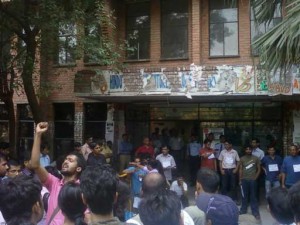 The pressure of the movement generated a huge momentum. As a result, the Academic Council meeting on 18th March was forced reject the Aditya Mukherjee Committee recommendations. Due to this, the casteist forces on campus suffered a major setback. A dean’s Committee will soon meet to look into the option of following the Central University of Hyderabad in implementing OBC reservations and correcting the anomalies that have prevailed in JNU so far Yet the possibility still remains that the JNU administration will find new ways to subvert the implementation of reservations and use new tricks to follow their old agenda. Therefore, the student community of JNU will have to remain vigilant and prepared. On its part, AISA is committed to taking forward the struggle for social justice in every way.
The pressure of the movement generated a huge momentum. As a result, the Academic Council meeting on 18th March was forced reject the Aditya Mukherjee Committee recommendations. Due to this, the casteist forces on campus suffered a major setback. A dean’s Committee will soon meet to look into the option of following the Central University of Hyderabad in implementing OBC reservations and correcting the anomalies that have prevailed in JNU so far Yet the possibility still remains that the JNU administration will find new ways to subvert the implementation of reservations and use new tricks to follow their old agenda. Therefore, the student community of JNU will have to remain vigilant and prepared. On its part, AISA is committed to taking forward the struggle for social justice in every way.
See How JNU is Violating the Law on OBC reservations!
Details of the Marks of 2009 Admissions Obtained Through RTI Show How Eligible OBC Students Were Denied Admission through Illegal Cut-Off Criteria
| Centre
(A) |
Total Offer
(B) |
Seats reserved for OBC students as per 18% of total offer
(C) |
Actual OBC seats offered
(D) |
DEFICIT in OBC reservation i.e. (C)-(D)
(E) |
Mark of the Last candidate offered admission in the general category
(F) |
Centre-wise “Effective” qualifying mark for OBC candidates by JNU’s wrong criterion
i.e. ( F-10) (G) |
Number of OBC eligible students available from whom the deficit could have been filled, if JNU’s had not applied its arbitrary and wrong Cut-off criterion i.e. (F-10)
(H) |
Additional Information on the POOL of eligible OBC students denied admission by the faulty cut-off criterion
(I) |
| MA Admissions 2009-10 | ||||||||
| ECO/
SSS |
123 | 22 | 3 | 19 | 73 | 63 | 79 | Deficit of 19 could have been filled by going down to 40 marks, instead of the arbitrary cut-off bar of 63. Even a student with 59.5 marks was denied admission. |
| MOD/
SSS |
39 | 7 | 0 | 7 | 70 | 60 | 53 | Deficit of 7 could have been filled by going down to 49 marks, instead of the arbitrary cut-off bar of 60. Even a student with 59 marks was denied admission. |
| MED/
SSS |
26 | 5 | 1 | 4 | 67 | 57 | 43 | Deficit of 4 could have been filled by going down to 45 marks, instead of the arbitrary cut-off bar of 57. Even a student with 52 marks was denied admission. |
| POL/
SSS |
78 | 14 | 4 | 10 | 48 | 38 | 23 | Deficit of 10 could have been filled by going down to 31 marks instead of the arbitrary cut-off bar of 38. Even a student with 36 marks was denied admission. |
| LIN/SL | 31 | 6 | 3 | 3 | 71.5 | 61.5 | 33 | Deficit of 3 could have been filled by going down to 58 marks, instead of the arbitrary cut-off bar of 61.5. Even a student with 58.5 marks was denied admission. |
| SAA | 31 | 6 | 0 | 6 | 71 | 61 | 10 | Deficit of 6 could have been filled by going down to 30 marks, instead of the arbitrary cut-off bar of 61. Even a student with 57 marks was denied admission. |
| MPhil Admissions 2009-10 | ||||||||
| MOD / SSS | 21 | 4 | 3 | 1 | 65 | 55 | 9 | Deficit of 1 could have been filled by going down to 54 marks, instead of the arbitrary cut-off bar of 55. |
| POP/
SSS |
20 | 4 | 2 | 2 | 43 | 33 | 0 | Deficit of 2 could have been filled by going down to 31 marks, instead of the arbitrary ‘qualifying’ bar of 35. There were 2 students with 31 and 32 marks. |
| ECN/
SSS |
20 | 4 | 3 | 1 | 53 | 43 | 4 | Deficit of 1 could have been filled by going down to 42 marks, instead of the arbitrary cut-off bar of 43. |
| SOC/
SSS |
35 | 6 | 1 | 5 | 64 | 54 | 16 | Deficit of 5 could have been filled by going down to 48 marks, instead of the arbitrary cut-off bar of 54. Even a student with 53 marks was denied admission. |
| SSP/
SSS |
11 | 2 | 1 | 1 | 66 | 56 | 6 | Deficit of 1 could have been filled by going down to 53 marks, instead of the arbitrary cut-off bar of 56. |
| INP/
SIS |
10 | 2 | 0 | 2 | 64 | 54 | 4 | Deficit of 2 could have been filled by going down to 44 marks., instead of the arbitrary cut-off bar of 54. Even a student with 47 marks was denied admission. |
| ENG/
SL |
21 | 4 | 3 | 1 | 66 | 56 | 9 | Deficit of 1 could have been filled by going down to 55 marks, instead of the arbitrary cut-off bar of 56. |
| VSA/
SAA |
7 | 1 | 0 | 1 | 70 | 60 | 1 | Deficit of 1 could have been filled by going down to 51 marks. instead of the arbitrary cut-off bar of 60. |
| TPS/
SAA |
7 | 1 | 0 | 1 | 80 | 70 | 1 | Deficit of 1 could have been filled by going down to 59 marks, instead of the arbitrary cut-off bar of 70. |
| CNS/
SAA |
7 | 1 | 0 | 1 | 78 | 68 | 1 | Deficit of 1 could have been filled by going down to 45 marks, instead of the arbitrary cut-off bar of 68. |
| CLG | 25 | 5 | 2 | 3 | 53 | 43 | 4 | Deficit of 3 could have been filled by going down to 38 marks, instead of the arbitrary cut-off bar of 43. Even a student with 42 marks was denied admission. |
| SAN | 16 | 3 | 2 | 1 | 72 | 62 | 6 | Deficit of 1 could have been filled by going down to 61 marks, instead of the arbitrary cut-off bar of 62. |
| ANC/
SSS |
10 | 2 | 0 | 2 | 52 | 42 | 0 | There were 2 candidates with marks 33 and 34, who could have been selected had the arbitrary cut-off bar of 42 marks not been there. |
| ECO/
SSS |
25 | 5 | 1 | 4 | 45 | 35 | 0 | There was one student at 33.5, who could have been selected had the arbitrary ‘qualifying’ bar of 35 not been there. Other than this, there were not enough applicants. |
| EDU/
SSS |
21 | 4 | 0 | 4 | 54 | 44 | 3 | No OBC candidate available even by correct cut-off criterion. One candidate had 23 marks |
| SPH/
SSS |
12 | 2 | 0 | 2 | 42 | 32 | 0 | No OBC candidate available even by correct cut-off criterion. There were 2 candidates at 22 and 24. |
| RCA/
SIS |
31 | 6 | 3 | 3 | 47 | 37 | 2 | The deficit could have been filled had the arbitrary ‘qualifying’ bar of 35 not been there. There was one candidate with 36 marks. |
| EUP/
SIS |
13 | 2 | 1 | 1 | 40 | 30 | 0 | The deficit could have been filled had the arbitrary ‘qualifying’ bar of 35 not been there. There are two more candidates at 34 and 31 |
| ITD/ SIS | 8 | 1 | 0 | 1 | 53 | 43 | 0 | Candidates not available |
| LIN/
SL |
14 | 3 | 0 | 3 | 57 | 47 | 0 | 1 candidate available at 33, who could have been selected had the arbitrary ‘qualifying’ bar of 35 not been there. Other than this, there were not enough applicants. |
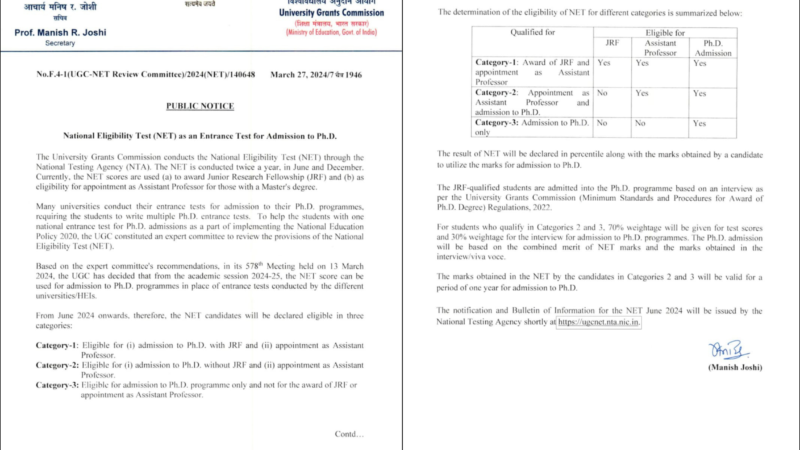
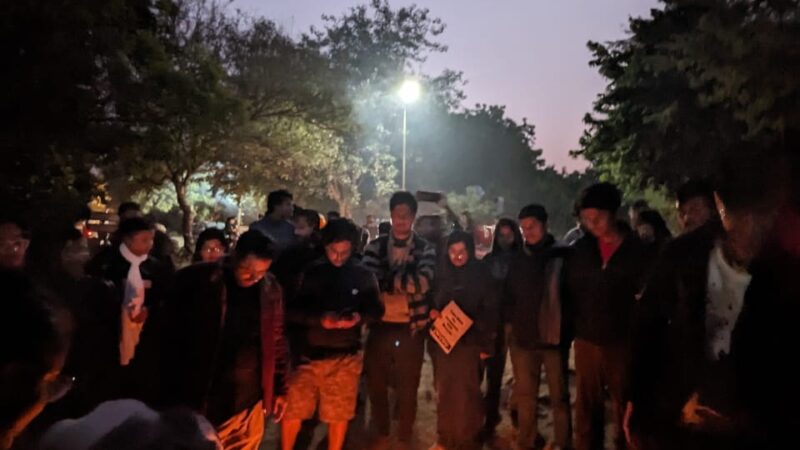
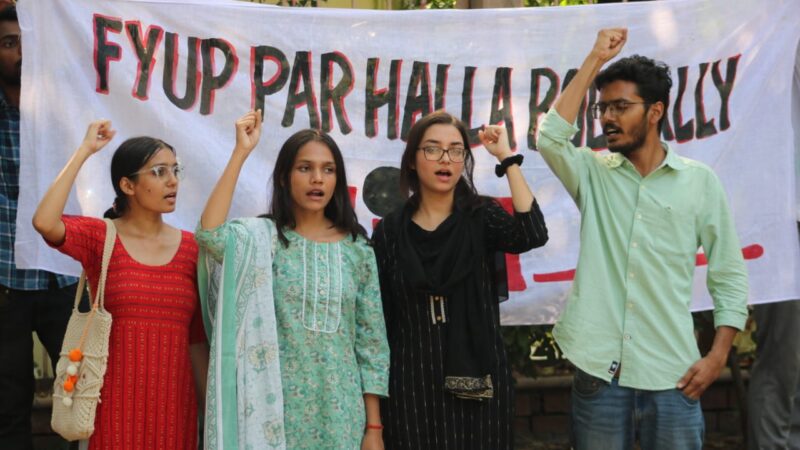
inqulap zindabaad , sangharsh zinda rahega dosto
A movement conceived by AISA, when all other organization proudly declined to understand the fact of the substance,
Waged by AISA, when all other organizations were busy in mud slinging and other petty politicking!
Long Live AISA! our struggle for social justice LONG LIVE!!!
TATHYON KE SATH AANDOLAN KE LIYE AAGE BADHAN SAFALATA KI SAMBHAVANA KO BADHA DETA HAI